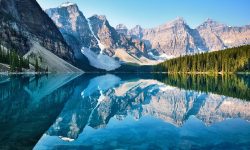Hunting in America offers a diverse range of experiences, from big-game hunting in the rugged mountains of the West to waterfowl hunting in the scenic wetlands of the Midwest. This guide provides valuable insights into some of the best hunting areas across the United States.
Hunting in the USA: A Thriving Tradition
Hunting in the United States is not just a recreational activity; it’s deeply ingrained in the nation’s culture and history. It’s a pursuit that spans generations and provides both sustenance and connection to the great outdoors. Here are some key points about hunting in the USA:
1. Rich Tradition: Hunting has a long history in the USA, dating back to Native American tribes who depended on hunting for survival. Today, it remains an important cultural tradition.
2. Economic Impact: The hunting industry contributes significantly to the US economy. It generates billions of dollars annually through equipment sales, licenses, and hunting-related tourism.
3. Varied Game Species: The USA offers diverse hunting opportunities, with a wide range of game species, including deer, turkey, waterfowl, elk, and small game.
4. Conservation Efforts: Hunters play a crucial role in wildlife conservation. Their contributions fund conservation initiatives, habitat restoration, and wildlife research.
5. Regulations: Hunting is regulated at the state level, with each state setting its own hunting seasons, bag limits, and license requirements. Regulations help ensure sustainable hunting practices.
6. Hunting Safety: Safety is a top priority in the hunting community. Hunters are encouraged to take hunter education courses and practice firearm safety.
7. Access to Public Lands: The USA boasts vast public lands, such as national forests and wildlife management areas, that offer hunting opportunities. These lands are often managed to support healthy wildlife populations.
8. Hunting Ethics: Hunters are expected to adhere to ethical hunting practices, including fair chase principles and respect for wildlife and landowners.
Hunting in the USA is more than just a pastime; it’s a way of life for many, deeply rooted in the country’s heritage and conservation efforts.
Hunting in the United States: A Closer Look 👇
Hunting in the United States is a popular outdoor activity with a rich history and cultural significance. Here’s an overview of hunting in the USA:
1. Tradition and Heritage: Hunting has deep roots in American history, dating back to Native American tribes who relied on hunting for food and resources. Today, it continues as a cherished tradition.
2. Diverse Game Species: The USA offers a diverse range of game species, including white-tailed deer, elk, turkey, waterfowl, upland birds, and small game. Each species has its own hunting season and regulations.
3. Conservation Impact: Hunters contribute significantly to wildlife conservation efforts. Through licenses, permits, and excise taxes on hunting equipment, they fund conservation programs that benefit both game and non-game species.
4. State Regulations: Hunting is regulated at the state level, with each state setting its own hunting seasons, bag limits, and licensing requirements. This allows for tailored management based on local wildlife populations.
5. Public Lands: The USA boasts extensive public lands, such as national forests, wildlife management areas, and public hunting grounds, providing access to hunting opportunities for both residents and non-residents.
6. Safety Measures: Safety is paramount in hunting. Hunters are encouraged to complete hunter education courses, follow firearm safety rules, and wear appropriate gear for visibility and protection.
7. Conservation Ethics: Hunters adhere to ethical principles, including fair chase, respect for wildlife, and private landowner rights. Ethical hunting practices are promoted to ensure sustainable hunting traditions.
8. Economic Contribution: The hunting industry has a significant economic impact, supporting jobs in manufacturing, retail, and outdoor recreation.
9. Hunting Organizations: Various hunting organizations and clubs across the country promote responsible hunting practices and wildlife conservation.
10. Hunting Seasons: Each species has designated hunting seasons to control harvest and protect breeding populations.
Hunting in the United States combines a rich cultural heritage with a commitment to wildlife conservation, making it a cherished and sustainable outdoor pursuit.
Best Hunting Destinations in America: A Hunter’s Paradise ⏬
Hunting enthusiasts in America are spoiled for choice when it comes to finding exceptional hunting destinations. Here are some of the best regions for hunting in the USA:
Destination Notable Game Species Features Texas White-tailed deer, hogs, quail Vast private ranches, diverse hunting opportunities Montana Elk, mule deer, antelope, upland birds Expansive public lands, breathtaking landscapes Alaska Moose, caribou, bears, waterfowl Rugged wilderness, true adventure hunting South Dakota Pheasants, deer, waterfowl Abundant public land, renowned pheasant hunting Colorado Elk, mule deer, big game High-altitude challenges, pristine wilderness Kansas Whitetails, pheasants, turkeys Prime deer and upland bird hunting, friendly locals Kentucky Whitetails, turkey, waterfowl Underrated hunting opportunities, scenic landscapes Arkansas Ducks, deer, wild turkey Excellent waterfowl hunting, diverse ecosystems Pennsylvania Whitetails, black bears, turkey Accessible hunting for Eastern species, rich history Idaho Elk, deer, wolves, upland birds Untamed wilderness, diverse hunting options
These hunting destinations offer a variety of game species, terrain, and hunting experiences. Whether you prefer stalking big game in the Rocky Mountains or chasing upland birds on the prairies, there’s a perfect hunting spot for every enthusiast in America.
House Hunting in the USA: A Comprehensive Guide
House hunting in the United States can be an exciting yet challenging endeavor. Whether you’re a first-time homebuyer or looking to relocate, understanding the housing market and its key aspects is crucial. Here’s a guide to help you navigate the process:
Step Description Determine Your Budget Calculate your budget, including down payment, monthly mortgage, insurance, and taxes. Consider pre-approval for a mortgage loan to understand your financing options. Choose Your Location Research areas that match your lifestyle, preferences, and needs. Consider factors like schools, job opportunities, safety, and proximity to amenities. Select Your Property Decide on the type of property you want, such as a single-family home, condo, or townhouse. Consider your space requirements, future plans, and homeowners’ association rules. Find a Real Estate Agent Work with a qualified real estate agent who knows the local market. They can help you find suitable listings, negotiate offers, and handle paperwork. House Hunting Attend open houses, view properties online, and schedule showings. Take notes, photos, and ask questions about the condition of the house and any necessary repairs. Make an Offer When you find your ideal home, submit an offer to the seller. Your agent will help you negotiate terms, including price, contingencies, and closing dates. Home Inspection Conduct a thorough home inspection to identify any issues or needed repairs. This step is crucial for ensuring the property’s condition matches your expectations. Closing Process Work with your agent and lender to complete the necessary paperwork, secure financing, and schedule the closing. Be prepared for closing costs and final inspections. Move-In Once the sale is finalized, prepare for your move. Coordinate logistics, transfer utilities, and plan the move-in day. Celebrate your new home and settle in!
Remember that house hunting varies depending on location and market conditions. Working with professionals and doing thorough research will increase your chances of finding the perfect home in the USA.
Best Public Hunting in Kansas: A Hunter’s Paradise
Kansas offers a diverse range of public hunting opportunities, making it a top destination for hunters. Whether you’re interested in deer, turkey, waterfowl, or upland game, the state provides excellent hunting experiences. Here are some of the best public hunting areas in Kansas:
Hunting Area Game Species Location Description Cheyenne Bottoms Wildlife Area Waterfowl (Ducks and Geese) Barton County Located in the Central Flyway, this wetland area is a haven for waterfowl hunters. It’s especially renowned for its duck and goose hunting opportunities during the waterfowl migration. Flint Hills Wildlife Area Upland Game (Pheasant, Quail) Chase County The rolling Flint Hills are ideal for upland game hunting. You can find abundant pheasant and quail populations here. Be prepared for challenging terrain and beautiful landscapes. Tuttle Creek Wildlife Area Deer (Whitetail and Mule Deer) Riley County Tuttle Creek is a prime spot for deer hunting, with both whitetail and mule deer populations. The area’s mix of timber, grasslands, and croplands provides excellent hunting opportunities. Kansas Wetlands Education Center Waterfowl (Ducks, Geese, Swans) Barton County This center offers access to a variety of wetland habitats, attracting waterfowl such as ducks, geese, and swans. It’s an educational and rewarding hunting location for waterfowl enthusiasts. Walk-In Hunting Access Areas Various Game Species Statewide Kansas offers numerous Walk-In Hunting Access Areas on private lands. These areas are open to the public and provide opportunities for hunting deer, upland game, and more.
Before heading out for a hunting trip in Kansas, ensure you have the required licenses, permits, and follow all regulations. Each hunting area may have specific rules and seasons, so it’s essential to check with the Kansas Department of Wildlife, Parks, and Tourism for up-to-date information and regulations.




